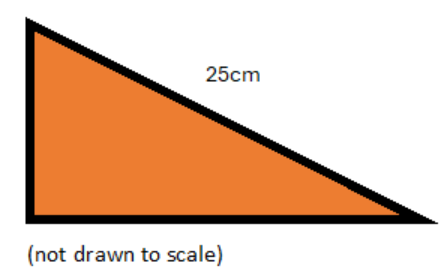The NWEA MAP Growth Test for 11th Grade supports college-readiness planning by measuring how effectively students apply advanced reasoning, higher-level reading skills, and analytical problem-solving. I’m Ariav Schlesinger, a MAP Growth specialist offering clear insight into what MAP Growth evaluates during the junior year.
This page includes:
- Free 11th grade MAP questions in Math, Reading, and Language Usage
- Explanations that demonstrate how to approach complex items
- A concise overview of the skills assessed in Grade 11
- Score information connected to long-term academic planning
- FAQs addressing common questions about MAP Growth in the junior year
Explore free questions and see how our preparation resources support stronger performance as students move toward college and senior year.
Math Sample Questions | Reading Sample Questions | Language Usage Sample Questions | Scores Explained | Junior Success | FAQs
Free MAP Growth 11th Grade Sample Questions
By junior year, students are expected to engage with complex material at a near-collegiate level. The MAP test adapts to this higher level of thinking, assessing the sophisticated skills they are developing.
What 11th Graders Learn: Math
The Math MAP Growth test moves beyond foundational concepts to assess a student's ability to solve multi-step problems. This often includes advanced algebraic concepts such as polynomial, logarithmic, and exponential functions; geometric principles involving trigonometry and a significant focus on data analysis, statistics, and probability.
What 11th Graders Learn: Reading
This MAP Reading test focuses on comprehension and critical analysis of difficult texts. Students are asked to evaluate an author's argument and rhetorical choices in persuasive non-fiction, analyze complex themes and character development in sophisticated literary passages, and use textual evidence to draw nuanced inferences.
What 11th Graders Learn: Language Usage
Language Usage: This section evaluates a student's command of the mechanics and strategies of effective writing. It assesses their understanding of advanced grammar and punctuation (like the correct use of semicolons and colons), their ability to revise sentences for clarity and style, and their knowledge of research skills, such as properly integrating and citing source material.
Understanding Your 11th Grader's MAP Scores
By junior year, the way you interpret MAP Growth scores evolves. Personal progress remains important, but overall achievement becomes a key indicator of your teen’s academic readiness and college competitiveness.
- The RIT Score: At this stage, your teen’s RIT score provides a clear picture of their academic standing. NWEA research shows strong correlations between RIT scores and likely performance on college entrance exams such as the SAT and ACT. This makes the MAP test not only a measure of current achievement but also a valuable predictor of future success.
- The Percentile Rank: In 11th grade, the national percentile takes on new importance. It reveals how your student’s performance compares with peers nationwide, helping you gauge their standing in the broader college applicant pool.
- The Growth Trajectory: Steady progress remains the ultimate goal. If scores level off or decline during this pivotal year, it may indicate the need for fresh study strategies or additional practice to master more advanced material. Addressing these patterns early ensures your teen stays on track for senior-year success and beyond.
To learn more about how MAP scores are calculated and what each number means, visit our MAP Growth Score Guide.
How Parents Can Support Their Junior's Success on the MAP Growth Test
Your role during this important year is to be both a strategic guide and a source of calm support. Helping your teen prepare for the MAP Growth test means reinforcing focus, balance, and smart study habits.
- Connect MAP results to college readiness: Review your teen’s MAP Growth report together and pay close attention to the skill breakdown. If a skill such as “Evaluating Arguments” or “Analyzing Text Structure” appears as an area for improvement, build it into their study routine. Use targeted MAP practice materials and complementary SAT-style questions to strengthen those exact skills.
- Encourage high-level reading: The MAP Growth test measures how well students comprehend and analyze complex texts. Encourage your teen to read articles from credible sources such as The New York Times, The Economist, or Scientific American. Discuss what they read by asking about the author’s purpose, evidence, and reasoning. These conversations deepen comprehension and critical thinking skills.
- Protect time and maintain balance: Junior year can be overwhelming with advanced classes, activities, and exam prep. Work with your teen to create a structured weekly plan that includes focused study blocks and consistent rest. Quality sleep and downtime are essential for concentration and long-term retention.
- Keep the right perspective: Remind your teen that the MAP Growth test is not about judgment. It is a learning tool that highlights strengths and opportunities for growth. Viewing the results as actionable feedback helps reduce anxiety and turns testing into a chance for improvement.
A supportive, balanced approach, combined with focused MAP preparation, ensures your junior is ready to perform their best and continue building momentum toward college success.
Ask Ariav

Ariav Schlesinger is a certified teacher with a Master's in Education and a MAP Growth specialist with over a decade of experience developing 11th Grade MAP-aligned questions. His materials include clear explanations that strengthen advanced reasoning across math, reading, and language usage, build college-readiness skills, and help 11th graders gain confidence and perform their best on the MAP Growth test.
Frequently Asked Questions (FAQs)
No, colleges do not request MAP Growth scores as part of the application process. However, the test is an extremely accurate predictor of performance on the SAT and ACT, which colleges do see. It's best used as an internal tool to prepare for those exams.
Both tests measure similar college-readiness skills, but they have different purposes. The MAP test is an adaptive assessment that pinpoints a student's precise learning level and measures their individual growth over time. The PSAT/NMSQT is a static test that serves as a practice SAT and is the qualifying test for the National Merit Scholarship Program.
A plateau in 11th grade is a signal to investigate, not to panic. The academic demands of junior year are significantly higher, and it could mean your child's old study habits are no longer sufficient for the more complex material. This is a perfect opportunity to meet with their teacher to discuss classroom performance and develop new strategies.
The MAP Growth test and college entrance exams assess many of the same skills, including reading comprehension, data analysis, and algebraic reasoning. Reviewing your teen’s MAP report can help identify which SAT or ACT topics to focus on first. Using MAP-aligned practice materials allows your teen to build confidence in a low-pressure environment before taking official college exams.
Families trust TestPrep-Online because each pack mirrors the real MAP testing experience and provides targeted practice, score explanations, and progress tracking. With our expert-designed materials, your teen can prepare with confidence and measurable results.
Your teen’s MAP report includes a detailed breakdown of strengths and areas for improvement. Review specific skills together, such as “interpreting data in graphs” or “evaluating an author’s argument,” and focus on one or two areas per week. Turning these insights into short-term learning goals makes test prep more manageable and rewarding.
Effective MAP preparation blends consistent review with strategic practice. Encourage your teen to use short, focused study sessions, read high-level nonfiction texts, and practice with adaptive-style questions similar to those on the real test. The MAP Growth 11th Grade Practice Pack offers structured lessons, detailed explanations, and score-tracking tools to make this process more effective.
The test measures skills in Math, Reading, and Language Usage. Math questions often involve algebraic functions, trigonometry, and data analysis. Reading focuses on complex texts and author’s purpose, while Language Usage tests advanced grammar, punctuation, and revision skills. The adaptive nature of the test ensures that each student is challenged appropriately at their current learning level.



